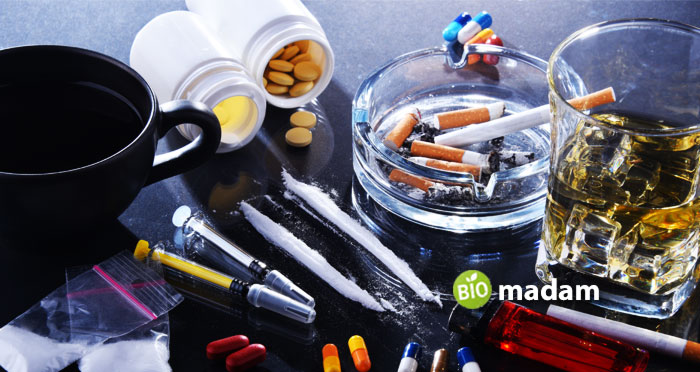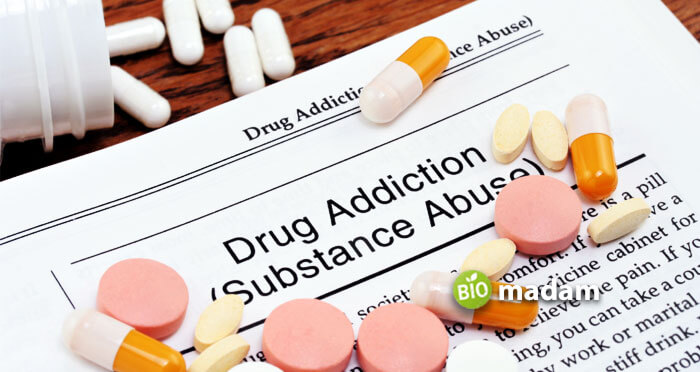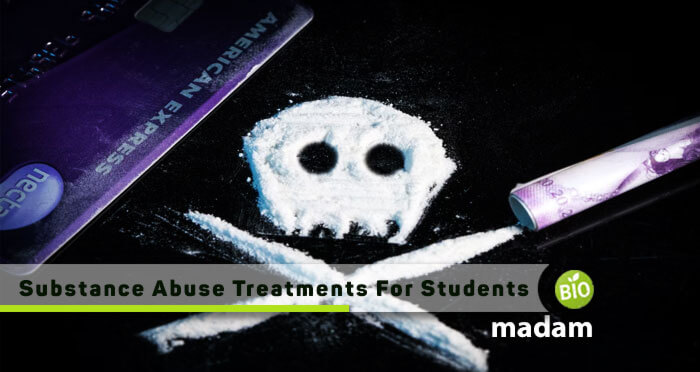Substance addiction is a condition where an individual is experiencing compulsive drug and alcohol abuse. Unfortunately, there are growing cases of young adults, especially college students, engaging in this problem. This can be because of school-related stressful factors, such as bullying, course programs, workload, and peer pressure.
Once they are addicted, it will be extremely difficult for them to withdraw from using such substances because of the damage done to their brain. It’s also not wise to stop or decrease the use of substances without any supervision or advice from a medical professional.
If someone you know needs a drug or alcohol addiction recovery plan, kindly refer them to your local rehabilitation centers and help them start the recovery process immediately. Addiction treatment may not always be easy, but somehow, it has helped many lives and continues to help more lives in addressing such issues.
Also, there’s no one-size-fits-all treatment when it comes to substance addiction. Every healing journey is different for every person. In this article, you’ll get to understand the different types of addiction treatment, including the therapies used during the process.
What are the Causes and Risk Factors of Substance Addiction?
The treatment may depend on the causes, level of addiction, and risk factors that develop your substance addiction, such as:
- Hereditary or genetic-related causes, such as a family history of substance abuse
- Substance misuse at a very young age
- Intense conflict or violence within the family
- Past histories of abuse and violence
- Access to drugs and alcohol at a very young age
- Unguided by parents
- Currently suffering from a mental disorder, such as schizophrenia, depression, etc.
- Exposure to product advertisements, especially alcoholic substances
Through proper counseling, therapy, and rehabilitation, the causes and risk factors that develop the addiction will be discussed, and the treatment process will be created. Since addiction affects everyone differently, the treatment process may also vary for each person.
Fortunately, there are specialized treatment programs that can address everyone’s individualized needs.

What is Addiction Treatment?
Addiction treatment is a combination of different practices designed to address the needs of people and help them eliminate the use of drugs and alcohol in their system. Without these substances, their lives will improve, including the relationship with their family and the community they belong in.
Seeking treatment may be different for every person. Some of them seek help because they want to stop themselves from using such substances, while others result from legal issues that require them to undergo comprehensive medical treatment.
A comprehensive medical treatment is a combination of the following treatment and therapies, including:
- Medical detoxification
- Medications
- Behavioral therapies
- Social services
- Support group participation
- Counseling
- Family therapy
A combination of these may depend on the patient’s specific needs. Furthermore, the treatment process may change over time based on the reaction of the patient’s mind and body to the treatment.
In addition, substance addiction is considered a relapsing condition, meaning the patient may receive improvement at first, but symptoms may appear after. When these relapses occur, it doesn’t mean the treatment approach failed. It’s a normal reaction of your body after receiving the treatment and withdrawing from the addiction.
Instead, relapses may indicate an adjustment or change in the treatment plan to maintain the momentum and balance of the recovery process.
What are the Different Types of Substance Addiction Treatment?
As mentioned above, addiction treatment programs often combine two or more different approaches to help those in need. Usually, it begins with a detoxification process. It helps the patient slowly withdraw from the grip of the substances, their signs, and symptoms. Then, they will proceed with other effective techniques, such as therapies and other services.
Here are some of the most common treatments that may help young ones reach the path to recovery:
Inpatient Rehabilitation
Inpatient rehab is a treatment program where a patient becomes a temporary resident in a treatment facility to receive services 24/7, with close supervision of a medical professional on-site.
In a rehab facility, an experienced medical professional will assess the patient and guide them on the level of care they need. In addition, nurses or certified nursing assistants are always present when they need to call for help. Their job is to check the patient consistently and ensure that they take the medications and therapies as prescribed by their doctors.
When choosing the right level of care, there should be a medical professional who will assess the patient’s needs, risks, strengths, and resources. They would want to consider an inpatient treatment program if:
- Addiction has been a problem for so long
- The patient has other co-occurring mental disorders, such as depression, anxiety, etc.,
- The patient has underlying serious medical conditions
- They are surrounded by people who are actively abusing substances
On top of that, the length of stay in an inpatient rehab may vary, depending on the treatment program and the condition of the patient. According to experts, the average length of completed short-term treatment is 28 days for the hospital and 24 days for a residential program.
On the other hand, the completed long-term treatment program has an average of 83 days length of stay. Additionally, it’s worth noting that long-term and repeated care is often associated with better results than short-term treatment. With that said, many people should consider this to help them completely stop using and abusing substances.
Outpatient Rehabilitation
In outpatient rehab treatment, the patient gets treated by attending and participating in regular sessions or receiving medical services at a facility while still living at their home. Moreover, the treatment options are often similar to inpatient rehab programs.
However, the outpatient setting focused on education, counseling, and helping people recover from using substances. The outpatient setting may be perfect for people who:
- Are maintaining their jobs
- Have a strong support system from family and friends
- Have finished their residential or inpatient treatment program
Similar to the inpatient setting, the treatment program for outpatients may vary. However, the process may be more cooperative for students and other people who are still attending classes and work while receiving treatment.
The outpatient treatment program includes drug education, support group counseling, and behavioral therapy. In addition, the outpatient setting has less structured care and supervision from medical professionals, which is common in an inpatient facility.
Here are some approaches to an outpatient treatment program:
- Standard Outpatient Program: This treatment program may take up to 9 hours per week for students and adults suffering from substance use disorder.
- Intensive Outpatient Program: This treatment program requires at least 9 hours or more per week. It’s for students and other people who have special needs and are suffering from co-occurring disorders.
- Partial Hospitalization Programs: This treatment program requires a minimum of 20 hours per week but doesn’t often proceed with 24-hour care.
Furthermore, it’s worth noting that inpatient and outpatient treatment settings may move in conjunction to provide the best level of care based on the patient’s healing journey.
For instance, patients may need to move to less intensive care as long as their recovery plan allows it. Although in some cases, other people receiving outpatient treatment may need to move to an inpatient recovery plan due to sudden and unforeseen worsening of conditions.

Detoxification
Detoxification is a supervised treatment program that helps people withdraw from using drugs and alcoholic substances. As the name suggests, it helps people cleanse the remaining traces of substances from their bodies and stabilize them for succeeding treatment procedures.
As mentioned above, a detox program is often the first stage of the healing process. It prepares people before undergoing treatment and allows them to focus on the treatment to support faster recovery.
Also, it’s good to remember that detox is not a substitute for any treatment options. Once detoxified, it doesn’t mean that they’re fully treated, physically and mentally, especially when suffering from dual diagnosis.
Usually, a detox program may require the use of medications that reduce cravings for substances, minimize symptoms related to withdrawal, and decrease the risks of getting serious complications. In addition, these medications may be more crucial to people who are previously taking potent substances, particularly opioids and benzodiazepines.
Cognitive Behavioral Therapy
Cognitive behavioral therapy (CBT) is commonly used to address substance use disorder as well as other co-occurring conditions like anxiety and depression. This therapy is based on the principle that thoughts can be learned and unlearned with proper guidance.
The therapy focuses on improving how the patient thinks and reacts to their surroundings, with strategies that stress critical thinking and correct faulty decisions.
When it comes to substance use, it helps people use different ways to avoid substances and teaches them how to cope with the cravings and symptoms brought about by substance use.
Contingency Management
Contingency management is a treatment process used to improve, maintain, and increase sobriety and abstinence. The therapy is based on the principle that people use drugs and alcohol because such substances are rewarding, which is also why it’s challenging to stop using them.
Instead, the therapy will replace this reward with materials to motivate people to eliminate the use of substances permanently. For example, if patients have consistent negative drug test results, they will be rewarded with meal tickets or special gift checks for their compliance.
It may sound exciting yet simple, but this technique shows that the therapy is effective and beneficial to make people abstain from substances.
Motivational Interviewing
Motivational interviewing is a therapy that helps people understand that their use of substances is not in conjunction and parallel to their goals and values in life. With this, they’ll be motivated to change their wrong habits and be eager to submit themselves to different treatment procedures without any resistance.
The therapy works by using a technique called ‘rolling with resistance.’ Rolling with resistance works by guiding the patient on their own definition of the problem related to substance abuse and its solution. Unlike other methods, this helps the patient not to be resistant during treatments as they’re not told what they need to do.
Further, motivational interviewing is a comprehensive treatment program that quickly motivates a person to undergo a series of treatment sessions. According to experts, people treated under this therapy have shown great results, particularly those addicted to alcohol and marijuana.
Also, it’s a useful way of motivating patients to get treated compared to instructing someone to get treated and change their lifestyle.
12-Step Therapy
The 12-step therapy introduces patients to the idea and practices of 12-step support groups, promoting continued abstinence and sobriety from substances. The concept of this therapy focuses on the cognitive, spiritual, and health aspects of the program. In addition, the therapy is usually hosted by institutions, such as Alcoholic Anonymous (AA) and Narcotics Anonymous (NA).
According to experts, studies suggest that patients who receive 12-step facilitation therapy experience better results than those who do not.
Matrix Model
The matrix model is an intensive treatment plan that uses different strategies and techniques to improve the patient’s relationships, emotions, and behavioral patterns. Plus, it emphasizes the relationship between client and counselor and encourages them to build a better foundation in their lives.
According to experts, the matrix model was originally created to address excessive use of stimulants, such as Cocaine. But now, it’s used to treat addiction with other substances due to its efficacy in combating substance misuse.
The model typically consists of:
- Treatment to reduce and prevent the occurrence of relapse
- Therapy involving family members
- Drug testing and screening
- Participating in various support groups
- Improving critical thinking skills and analysis, including problem-solving
In addition, the therapist is focused on giving rewards to those who observed good behaviors and improving their self-esteem, dignity, and self-worth.
Final Words
According to experts, the number of students getting involved in substance abuse is increasing at an alarming rate. This could be attributed to a series of factors, including but not limited to curiosity, peer pressure, stress, and workload. With that said, it’s critical for their parents to help their children undergo addiction treatment programs.
Listed above are the most common treatment programs proven to treat substance addiction effectively. However, starting the process is not always easy, especially when the patient is relying psychologically on such substances or if they’re also suffering from co-occurring disorders.
So, if you or a loved one needs help, don’t hesitate to call your local rehabilitation centers or hospitals to guide you towards the right treatment process.

Hi, they call me Jenna, and I am also known for achieving a gold medal during my Ph.D. in science life. I always had a dream to educate people through my utmost writing hobby. So, I chose this blogging path, and Biomadam gave me this opportunity to present for them. I now stand to entertain you. Continue reading my articles & discuss if you’ve any confusion through the comment section below.

